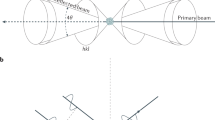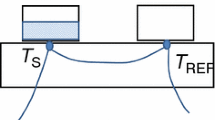Summary
Since very little was known about the drying of hygroscopic liquids for micro elementary analysis, various techniques were tested. Six drying procedures are described, compared and graded according to the amounts of sample available, direct contact with drying agents, complete separation of drying medium and liquid, and specific properties of the liquid compounds, such as hygroscopicity, vapor pressure, and viscosity.
A simple but efficient technique for the automatic filling of weighing capillaries with nearly complete exclusion of atmospheric moisture was developed.
In order to compare the efficiency of the various drying procedures, 5 to 10% by weight of water was added to organic liquids of known purity, and then removed by the appropriate technique. A fractional sample of the final product was analysed for carbon and hydrogen or nitrogen, by means of micromethods, and the percentages obtained were compared with the percentages found on the original, dry sample.
In connection with the work on the drying procedures a study was made of the factors which lead to loss of material in these manipulations, particularly losses due to evaporation, surface attraction, and adsorption. The investigation arose from a comparative study of various decigram, centigram and milligram procedures for micro preparative work.
Similar content being viewed by others
Literatur
H. K. Alber, Paper presented at theOrganic Symposium of the American Chemical Society, Richmond, Va., December 1937; Mikrochemie24, 97 (1938). —H. K. Alber andJ. Harand, Journ. Franklin Inst.224, 729 (1937); see pp. 730/31.
H. K. Alber, Part I of this series. Mikrochemie,25, 47 (1938).
H. Roth andE. B. Daw, Quantitative Organic Microanalysis ofFritz Pregl, pp. 51/52. Philadelphia 1937.
H. K. Alber, Mikrochemie18 92 (1935).
J. Pirsch, Ber. Dtsch. chem. Ges.65, 865 (1932).
H. K. Alber, Ind. Engin. Chem., Analyt. Ed.10, 348 (1938); this pressents an improvement overF. Emich’s capillary clamp, Mikrochemisches Praktikum, 2. Aufl., p. 86. München 1931. — See alsoH. K. Alber, Mikrochemie14, 219 (1933).
A. Soltys, Mikrochemie,Molisch-Festschrift, 398 (1936).
J. Lindner, Mikro-maßanalytische Bestimmung des Kohlenstoffes und Wasserstoffes mit grundlegender Behandlung der Fehlerquellen in der Elementaranalyse, p. 350. Berlin 1935.
A. A. Benedetti-Pichler andW. F. Spikes, Mikrochemie,Molisch-Festschrift, 3 (1936). The same cylindrical cones have been used by the author for semi-quantitative estimations in qualitative organic elementary analysis (footnote 1).
H. K. Alber, Ztschr. analyt. Chem.90, 100 (1932). See also the apparatus ofA. Soltys (footnote 8), which may be used if the form of the receptacle is slightly changed.
F. Emich andF. Schneider, Microchemical Laboratory Manual. New York 1932.
A. Fuchs, Monatsh. Chem.43, 129 (1922).
Preliminary experiments withW. G. Batt, not yet published. See footnote 1 andE. McDonald, Journ. Franklin Inst.225, 121 (1938).
A. O. Gettler, J. B. Niederl, andA. A. Benedetti-Pichler, Mikrochemie11, 167 (1932).
Footnote 15, see p. 177, Fig. 4.
J. Unterzaucher, Mikrochemie18, 315 (1935).
Since this article was submitted to the editors,J. D. Brandner, Ind. Engin. Chem.30, 681 (1938), reported on the importance of purifying the ester and of careful exclusion of moisture during weighing procedures.
H. K. Alber, Über die Beobachtung von Schlieren bei chemischen Arbeiten, nebst einigen Beiträgen zur Isolierung und zum mikrochemischen Nachweis des Glycerins. Thesis, Technische Hochschule, Graz 1928; see also Mikrochemie7, 21 (1929).
H. K. Alber, Ztschr. analyt. Chem.90, 87 (1932).
Author information
Authors and Affiliations
Rights and permissions
About this article
Cite this article
Alber, H.K. Hygroscopic substances in microanalysis. Mikrochemie 25, 167–181 (1938). https://doi.org/10.1007/BF02714760
Received:
Published:
Issue Date:
DOI: https://doi.org/10.1007/BF02714760




